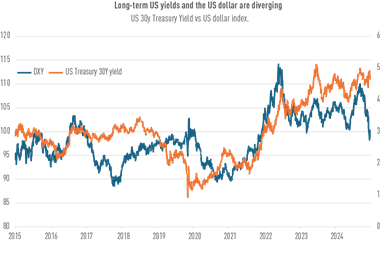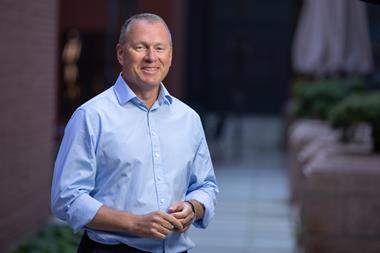Since the Indonesian Biodiversity Foundation or Kehati was established in 1994, there has been an Asian financial crisis, a dotcom bubble that burst and a global financial crisis.
In that period, the Jakarta-based endowment’s investment approach has come full circle after a decade and a half of market convulsions. It started with primarily index funds, later diversified its asset allocation to alternatives and is now returning to index investing with a long-term view.
Kehati’s operational and programme expenditures are central to its investment approach. The foundation can withdraw 5% a year from the market value of its endowment fund to cover operational costs, according to Gustaaf A. Lumiu, director of finance and administration.
Assuming inflation is 3% per annum and fund management fees are 1%, the endowment’s liabilities would be about 8% annually. Based on that, Kehati’s target investment returns are 10% per annum.
Past performance suggests that appears realistic. From 1994 to 2008, net annual returns were 9%. But there were periods of volatility. As the investment committee searched for smoother returns and uncorrelated assets, the portfolio diversified into hedge funds, real estate investment trusts and preferred shares for about three years.
But their performance disappointed Kehati . “Short-term investments can make high returns but in the long term, the returns disappear,” Lumiu says. ” We prefer to take a long-term view.”
Kehati’s parentage determined the endowment’s investment approach and policies, especially during the early years. Kehati is a grant-making entity with 501(c) tax exemption status in the US. It started life in 1994 through a US$16.5 million grant from the US Agency for International Aid.
The endowment’s market value in 2008, the latest annual report available, was
US$21.75 million. During the first five years, the endowment’s investment was restricted to US assets listed in the US and managed by firms registered with the US Securities and Exchange Commission. The policy asset allocation was 60% equities and 40% fixed income. For the first few years, the assets were primarily managed inhouse via index funds, says Lumiu.
But that evolved and changed over the years. In 2000, when Kehati’s investment policy was reviewed during global stock markets’ surge, the investment restriction was loosened to include global assets that were listed in the US and managed by SEC-registered firms.
From 2000 to 2002, the portfolio which was 55% equities and 45% fixed income at that time, suffered from the 9/11 ripples. It lost about US$5.2 million, according to a case study of Kehati by the Synergos Institute in the US.
Indeed, a Conservation Finance Alliance study of 19 conservation trust funds worldwide found that these funds’ investment returns were similar to US college and university endowments. University endowments’ average annual rates of return through the 1990s was about 13%. But in the 2000 to 2002 period, average losses 1.57%. From 2003 to 2005, returns were 11.14% and in 2006, 9.03%.
But Kehati had a vastly different portfolio to American education funds, which had made substantial allocations to private equity, hedge funds, real estate and other alternatives. That boosted performance until the financial crisis.
On the other hand, Kehati’s allocations were solely to listed equities and fixed income except for two or three years. Even so, Kehati’s average annual returns over 15 years were 9%, which is close to university endowments’ returns. Ostensibly, over the longer term, there was little need for diversification into alternatives — an observation Kehati would make after several years of diversification.
In 2003, after the portfolio made a loss, the investment committee deliberated on correlations between asset classes and decided to include hedge funds such as arbitrage and event-driven funds. That was when Kehati began to engage external investment managers because alternatives were only available through them, Lumiu explains. The foundation also invested in REITs for about two years, but the returns from both were unsatisfactory, Lumiu says. Net returns were 12.45% in 2003 and 4.3% in 2004.
In recent years, assets have been primarily reallocated back to global and Indonesian equities, fixed income and balanced funds. As of 2008, the portfolio was 68% equities and 32% fixed income.
“We will divest all hedge funds by the end of this year,” Lumiu says. In fact, he says Kehati’s investment committee is recommending increasing allocation to index funds.
“Research and history have shown that few fund managers can beat the index. Our preference is to invest via index funds, as we don’t have a large full-time team to watch the markets daily. Perhaps if we had the infrastructure, we might invest differently,” he says.
As that occurs, Kehati is likely to engage fewer external fund managers. The foundation started out with five global asset managers and currently works with three: JP Morgan, Morgan Stanley and The Investment Fund for Foundations. In the foreseeable future, there may be just one left, Lumiu remarks.
Aside from the three global asset managers, Kehati currently works with an investment adviser based in Canada and two Indonesian fund management firms, Mega Capital and Bahana. Mega Capital manages the foundation’s balanced fund and Bahana manages the fixed income fund. JP Morgan and Morgan Stanley maintain a segregated, discretionary account for Kehati.
The foundation also has an in-house investment team including an investment specialist Sani Burhanuddin and Lumiu. The investment committee comprises two bankers, a pharmaceutical executive, an oil company executive and an investment manager, who meet once a quarter.
As an organization tasked with preserving Indonesia’s biodiversity for future generations, Kehati’s endowment is invested through environmentally and socially responsible frameworks.
Mega Capital, one of Kehati’s external fund managers in Indonesia, manages a green fund that the foundation invests in. It is based on the SRI-Kehati Index, which the foundation launched in 2009 with the Jakarta Stock Exchange. Before the foundation formulated the SRI-Kehati Index, its funds were managed according to Global Reporting Initiative principles. Kehati withdrew $12m from its endowment from 1996 to 2007 to help it protect Indonesia’s biodiversity.
Kehati’s global allocations managed by JP Morgan and Morgan Stanley are also subject to SRI screens that include no tobacco, no gambling and other “sins”.














No comments yet